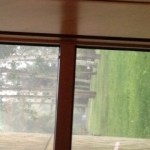astro
The Kavli Institute for Theoretical Physics is currently holding a "Rapid Response Workshop" on Black Holes: Complementarity, Fuzz, or Fire?, August 19-30.
Organizers: Raphael Bousso (UCB), Samir Mathur (OSU), Rob Myers (PI), Joe Polchinski (KITP), Lenny Susskind (Stanford)
The lunch talk today is Lenny Susskind "Inside Black Holes"
That talk will be available on video, audio and podcast feeds soon
The general session talks from the Fuzz, or Fire are available as they become available at the link above.
Final day of the "A Universe of Black Holes" workshop with a session: "Modeling Black Hole Accretion and Outflows" - all MHD sims today...
Chris Reynolds (Univ. of Maryland) starts with - The temporal variability of model accretion disks
Had to miss this. Go check it online, Chis gives fab talks.
Julian Krolik (JHU) "The Bardeen-Petterson effect in magneto-hydrodynamics"
Krolik demonstrated large Reynolds stress...
cf " Alignment of supermassive black hole binary orbits and spins" - Miller & Krolik 2013
Jim Stone (Princeton) "New magneto-hydrodynamic simulations of radiation pressure…
Last year EANA, the European Astrobiology Network Association put up a series of 18 introductory astrobiology video lectures constituting the AstroBiology Course Lectures:
Introduction to Astrobiology
Formation of the Solar System
Origins of Life: current theories
Comets and the origin of life
Basic prebiotic chemistry
Structures and evolution of proteins
Most simple (early) life forms
On the bias of metabolism versus genetics first
Extremophilic microorganisms
Desiccation and radiation resistance of extremophiles
Search for Life on Mars
Biosignatures of microbial life (early…
The workshop on Massive Black Holes at the Kavli Institute for Theoretical Physics continues with today's session on "Co-evolution of black holes and their host galaxies".
I continue a semi-liveblog of the proceedings.
As before, talks are online here - podcast, audio and video options; pdfs of talk slides added as speakers get them in.
First up is Yohan Dubois (IAP / Oxford Univ.) - on "AGN feedback in adaptive mesh refinement cosmological simulations" - high res AMR simulations of massive gas rich halos at z ~ 5-6
make some assumptions about SMBH formation and accretion efficiency on small…
We are back to "Massive Black Holes"
Happy Birthday Alberto!
Alberto Sesana (AEI) leads off with "Probing massive black holes with space-based interferometry and pulsar timing"
starts with overview of gravitational radiation - characteristic frequencies, amplitudes, timescales
Baby Black Holes - up for adoption, get collectible adoption certificates with a picture of your very own baby black hole, or one much like it
- this is eLISA's plan for fundraising...
Ed - ok it is real it is an etsy thing and they are ***adorable***
quick pitch for eLISA/NGO
Ed: New improved eLISA web page - see…
the Massive Black Holes workshop at KITP continues, with another Black Hole Pairs session
Mike Eracleous kicks off: Observational Searches for Close Supermassive Binary Black Holes
emission line signatures of close (~ sub-parsec) supermassive binary black holes
cf "A Large Systematic Search for Recoiling and Close Supermassive Binary Black Holes"
and "Emission Lines as a Tool in Search for Supermassive Black Hole Binaries and Recoiling Black Holes"
look for single line emitters, broad emission line displaced from narrow emission lines - displacement is ~ 1,000 km/sec
orbital periods of…
"Massive black hole pairs" is the topic of today's session at the BHOLES13 workshop at KITP
Talks are online here - note that slides of talks show up later as speakers get their act together and send in slides
Monica Colpi (Milan) starts the session with Formantion of Binary Black Holes in Galactic Nuclei
starts off with good summary of "last parsec" problem and why it is a bit of a red herring
followed by discussion of role of gas at late stage of mergers and summary of sims
new trendy things to do is to look at star formation in situ in outer accretion disks - something must happen, but it…
and we are back from lunch
J. Johnson (LANL) talking about supermassive stars as seeds for supermassive black holes - going to be getting more technical
supermassive star has a gas mass ~ 105 solar masses (as oppesed to few hundredish solar masses for standard Pop III stars that could provide low mass seeds)
form later than Pop III - maybe ~ 4-500 Myr after Big Bang
something like that may be needed for observed high luminosity quasars at redshift > 6.
radiative feedback, still not doing it right
but are we they doing it well enough...?
argues supermasive star formation common at z ~ 8-12…
Visiting lovely KITP for the A Universe of Black Holes programme, and specifically the associated "Massive Black Holes: Birth, Growth and Impact" workshop.
As usual the talks will (eventually) be posted on line, both slides and web, but in the mean time I will be semi-transcribing my semi-coherent stream-of-consciousness thoughts on the issues.
And we are off, with new KITP Director Lars Bildsten welcoming the hordes.
As is typical, about half the attendees are noobs and have not visited KITP before.
Are they in for a treat.
Marta Volonteri (IAP), one of the workshop organizers, leads off…
Simon White Director of Max Planck Institut für Astrophysik giving today's Physics Colloquium at ACP on the Planck Results
Likely to be interesting, hence the semi-liveblog.
Starts with description of the collaboration and historical perspective; Penzias and Wilson, COBE and WMAP
Cute ESA video showing Planck science
Even better ESA video explaining stuff
Very good description of baryon acoustic oscillations and polarization.
Quick glimpse of stacked and normalized Planck measurements of tangential/radial polarization of cold/hot spots at ~ 1 degree scales.
Nice animation blinking weak…
I am at a meeting at an undisclosed location, and concurrently the weak lensing folk are having a workshop on future surveys, so I am slumming at their sessions in my copious spare time.
This morning Tony Tyson is leading a discussion on the technical aspects of the surveys, with LSST as the working example.
That is all well and good, and it is actually extremely interesting to hear people talk about the nitty gritty - I think it is good for theorists to hear about what it is really like down in the trenches, as it were.
But, the really interesting aspect is the discussion diverged into…
Earlier this month I got an invitation to the White House.
It was rather cryptic, asking me to attend an Event, today, followed by a reception in the Indian Treaty Room
Regrettably, I had to decline, I was in Europe, and would only just be getting back. The logistics of getting to DC in time were near impossible; there is no source of funding for such jaunts; and, most important, there was no way I could get the paperwork to be cleared to attend submitted in time.
So, they went ahead without me.
Paul Ginsparg
The Event was the Champions of Change - Open Science edition: a Call for…
Over the next 10 years, what research done on bodies within our Solar System (measurements and theory) will be most important for informing our search for life beyond the Earth?
This is the current topic posed as the Single Question on the Future of Astrobiology at the ongoing NASA Astrobiology Institute Roadmap online exercise.
If you want to opine, The Forum is Open
The final session in the online discussion of the NASA Astrobiology Roadmap is today from 4-5 pm eastern.
Go to Astrobiology Future to sign in to the live web chat. Questions and comments will be taken both from call-ins and from written questions.
The online discussion will be moderated by Dr Francis McCubbin from UNM, Dr Sean Raymond from Laboratoire d'Astrophysique de Bordeaux, and yours truly...
The live session will, as with the other Roadmap sessions, be followed by a week long opportunity to input questions, ideas and topics for discussion at The Astrobiology Future Forum.
The four…
Astrobiology Future
The NASA online discussion session on the Astrobiology Roadmap continues this week.
This morning there was a web chat on "Early Evolution of Life and the Biosphere", which is being followed up by an ongoing online discussion on the questions posed and soliciting ideas for priorities in research direction.
The questions being discussed are:
How has the exponential growth in our discovery and understanding of exoplanets impacted the kinds of questions and information we extract from the early Earth record?
Are there problems you think are vital to understanding the early…
I come to praise Kepler, not to bury it...
Kepler!
The Kepler Mission is one of the little NASA spacecraft that so frequently comes along, exceeds all expectations and changes our perspective of the universe.
There is a good Quick History of the transit method and Kepler Mission concept on the website.
Otto Struve noted in his seminal 1952 note that planetary "eclipses" of their parent stars ought to be detectable by photoelectric methods, a proposal that some two decades later was quantified by Rosenblatt, and then explored in detail (including development research) by Borucki and…
The future of Astrobiology research within NASA is being set now.
Next week there are further opportunities for community input.
The online discussion for Solar System Exploration wraps up today!
If you are an active researcher, a student planning on getting into astrobiology, or an interested member of the community, this is your chance to provide input on the direction of research.
This is your future.
Be there, or we will choose for you.
The NASA Astrobiology Roadmap exercise is under way, and will continue over the next two weeks.
NASA Astrobiology
The next two topics will kick off…
What are Origami Nanosat Telescopes? How about Kinetic Inductance Detectors?
More importantly, what should we do with them?
NASA's Astrophysics is doing a Roadmap exercise, with the stated intent to look at science goals, technology and capabilities up to 30 years out!
White papers were solicited a few weeks ago, and about 100 were received and are archived online, about 3/4 on science and 1/4 on technology.
There was originally supposed to be a workshop for presentation of selected white papers, but in the world of sequestration that was not feasible, so instead there was a two day online…
It is critically important that the community participate in the current ongoing discussion for the NASA roadmaps. Particularly if you are an early career researcher. This is your opportunity to make the case for what you think is interesting and important.
NASA Astrobiology
NASA is going through a series of Roadmap exercises by the different directorates, trying to set medium and long term policy for science goals, technology development and capabilities.
The NASA Astrobiology Program is doing a rolling series of Roadmap input sessions for four themes for Astrobiology.
Each theme kicks…


